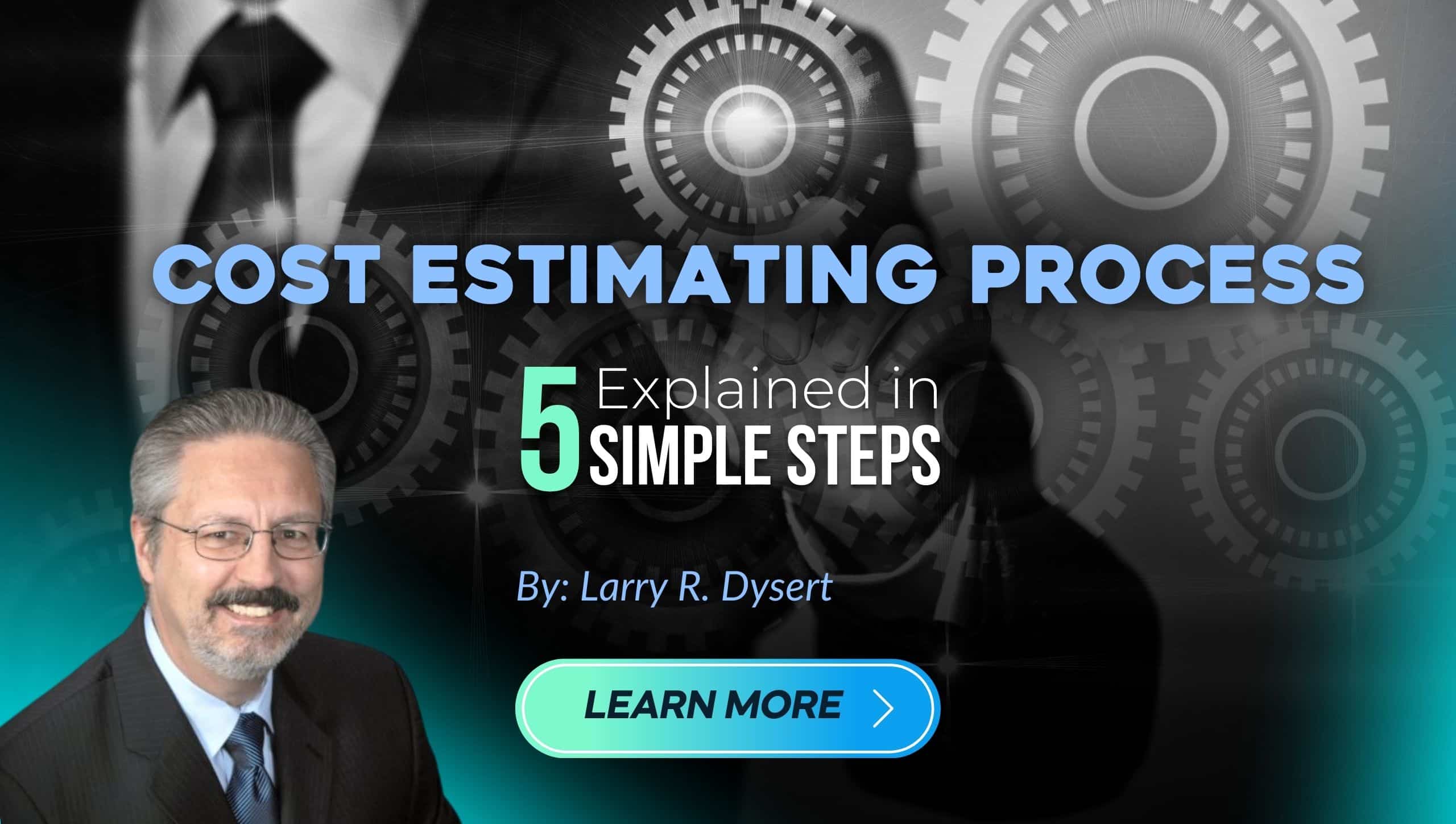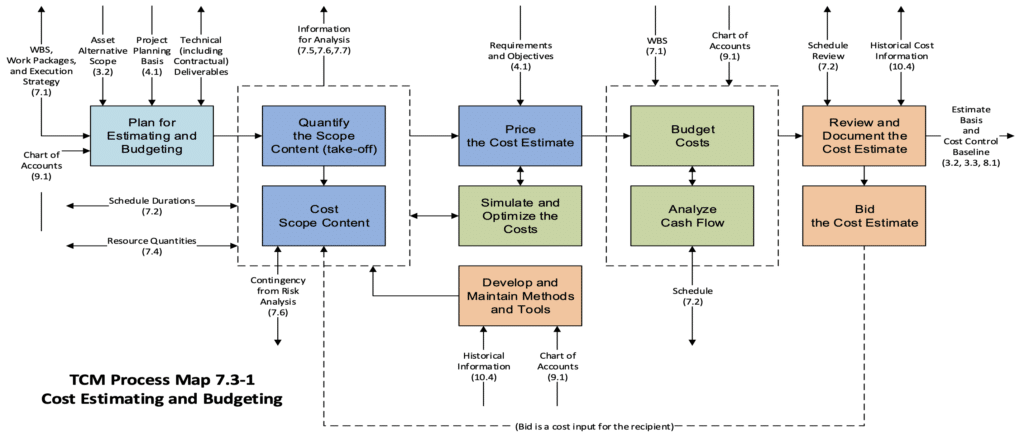A project lives and dies by its budget, but how do you put together a budget that will bring the project to fruition?
Well, developing the project budget originates from the Cost Estimating process.
What is a “Cost Estimate” in project management and how do you develop a cost estimate?
This video explains the Cost Estimating process in 5 simple steps.
Download the free audio mp3 podcast of this episode on iTunes.
Note: This video is a sneak peek of the presentation on “Emerging Trends and their Impact on the Future of Cost Estimating”, presented by Larry Dysert at the 2020 Project Control Summit. To get access to the full presentation and other recordings of the Project Control Summit, please click here.
Video Transcription
What is a Cost Estimate?
“A Cost Estimate is the prediction of the probable costs of a project or effort, for a given and documented scope, including a defined location and point of time in the future.”
Every estimate is going to be a prediction and involves uncertainty.
To be effective as estimators, you need to be able to accurately identify the scope of the project and apply the most reasonable cost for the materials, labor, and other resources, that are specific to the project conditions.
You need to keep in mind the purpose of a cost estimate. The purpose of an estimate is NOT to prepare a page with a bunch of numbers on it. The purpose of an estimate is to support effective decision-making that may significantly impact your organization’s bottom line, whether you are on the contractor or owners’ side.
Therefore, cost estimating supports decision-making to maximize the returns on investment in capital projects. As a result, the cost estimating process is creating information used for decisions.
What Is the Cost Estimating Process?
The flowchart below from the AACE International Total Cost Management framework illustrates a process map for the steps involved in the cost estimating process.
Step 1: Plan for Cost Estimating and Budgeting
The cost estimating process starts off with “planning” for cost estimating and budgeting.
In this stage, you determine the class of estimate that’s going to be correlated with the stage of project development.
You’ll be establishing project breakdown structures, identifying key cost driver attributes and relationships, collecting the information for pricing the estimate in terms of the current market conditions, and establishing the overall estimating methodologies that will use in your estimate.
Step 2: Quantify the Scope
The next step in the cost estimating process is the “quantification” step.
The quantification step is translating the technical scope documents prepared by the engineers and designers into quantities of materials (Material Take-offs) and labor activities that you’re going to apply pricing to on your estimates.
Next, you need to cost your estimates, which is applying the base default costs to the scope.
Step 3: Price the Cost Estimate
The next step is “pricing” the cost estimate, which is adjusting the default costs for the unique site, commercial, or other project conditions.
Following some iterative steps, you’ll optimize costs within your estimate.
Step 4: Develop Control Budgets
Eventually, you need to be able to translate the cost estimate into control budgets, to support Project Controls and specific contracting requirements.
Step 5: Review, Validate, and Document the Cost Estimate
The final step of the cost estimating process is to review and validate the estimates in consideration of risk and uncertainty.
In Summary
Although these five steps look simple, the Cost Estimating process is easier said than done. A well-defined cost estimate can be the difference between a successful project plan and a failed one. Keep these five steps in mind as a framework to start developing cost estimates that support effective decisions.
About the Author, Larry Dysert

Larry R. Dysert is a sought-after speaker and author on cost estimating and cost engineering topics. He brings over 30 years of professional experience in cost estimating, management, project consulting, and training experience in a wide variety of industries. Currently, he is serving as the managing partner in Conquest Consulting Group, providing consulting services to process industry owners on recommended best practices for estimating, project controls, and project benchmarking. Larry has been responsible for the preparation of conceptual and detailed estimates for capital projects, domestic and international, ranging to over $25 billion in size.
Active in AACE International, Larry is a past Vice-President and Chair of AACE’s Technical Board. Larry is also a Fellow of AACE International, a recipient of AACE’s Total Cost Management Award, a recipient of AACE Award of Merit, and an Honorary Lifetime Member. Larry was the Chair of the task force that developed AACE’s Certified Estimating Professional Program.
Larry has specialized in estimates of various project sizes, strategic importance, utilizing new technologies, and those involved in the use of parametric estimating methodologies. Larry has presented training seminars in estimating, cost metrics analysis, risk analysis, and Total Cost Management to process industry companies around the world.






![[Free 90-min Masterclass] The Ultimate Leadership Recipe for Project Professionals](https://www.projectcontrolacademy.com/wp-content/uploads/2024/08/4-1024x576.jpg)















